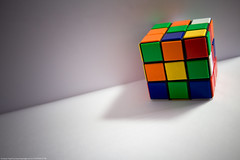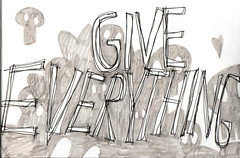On Making Collaborate Space (Virtual and Otherwise) from Angelica Macklin on Vimeo.
Thursday, June 4, 2009
Saturday, May 30, 2009
The LiveStream Wikifesto
LiveStream is a collaboration laboratory, or co-lab, that enables artistic collaboration, multi-sensory media production and social research among cultural workers and their spectactors. A full redesign of the existing University of Washington Bothell (UWB) Media Lab, LiveStream is both a real and virtual space equipped to support Collaboration 2.0 within UWB community. Like a stream that is both home to a variety of life forms and pathway for others, LiveStream is a space that plays host to co-habitants who construct and maintain creative ecologies at all scales suitable to practicing and archiving social bodies in action. In other words, LiveStream is place to embody live streaming, with one foot fixed in the real world and one wading virtually.
Community
University of Washington Bothell (UWB) community: faculty, students, staff and their various partners and publics.
Activities/Exchanges that need to occur in the space
LiveStream is uniquely designed to flow with the currents of contemporary life. As a laboratory, LiveStream enables knowledge producers to do what they cannot do in comfort of their private studios. That is, conduct research and receive post-modern feedback:
* Archive written or recorded comments at interactive Feedback Stations with display units surrounded by smart Boards and built in digital recorders
* Capture the ambient ways people ‘sense’ work from built in cameras, microphones, touch screens and body-heat sensors throughout
 Image by Gojca via Flickr
Image by Gojca via Flickr
As a collaborative space, LiveStream enables intentional and unintentional groups to be present in multivocal ways. That is, calibrate real and virtual time in the here and now:
* Sync spacial and virtual interactions through ongoing ‘live streaming’ that link upstream and downstream activities
* Present low-impact pathways for strangers to engage in live projects, such as creating soundscapes and film projects based on the performances and interactions that occur within the space
As a new media space, LiveStream provides the tools to produce new repertoires of life. That is, create original multi-sensory pieces:
* Access technology, such as computers, with recording and editing features
* Single out and layer various environmental frequencies – sound, footage and heat
* Reconfigure space for staging performances or other creative uses
What was happening before; what changes are you looking for?
The University of Washington Bothell is a place where collaboration is both theorized and practiced. Academic programs have attracted faculty and students committed to collaborative, interdisciplinary research agendas at all levels and locations and with many publics. As a satellite of its flagship campus just minutes away and in the interstices of urban and suburban, the UWB community extends both physically and virtually in all directions. In fact, with a reconstructed creek on the property, one could say the culture at UWB is like a stream in larger watershed system: adaptive, fluid, and transitory.
The current UWB media lab is not set up to document or support projects that reflect this culture. It is a place to engage media singularly, as in editing, yet poorly equipped to place these singularities in conversation and collaboration with each other. While still computer-based, LiveStream activates other life technologies necessary to produce works that are multiplicitious. That is, real and virtual, engineered and experimental, found in both the archive and the repertoire. Thus, in LiveStream, less people will be working with headphones alone in front of a computer screen. In LiveStream, more people will be playing with each other, building distinct spaces, maneuvering their space in relation to others’ space, interacting within a totalized environment, managing and merging real and virtual time, capturing these multi-sensory interactions through smart technology, and displaying their pieces at various stages of completion for public viewing and feedback.
Organizing principles
Explicit
LiveStream is sculpted like a stream, a place to put people and objects into motion. A rotating stage for performances and moveable work pods allow projects to be configured and move freely. Yet, like an object seen in a stream, LiveStream is a place to capture the resistance of people and objects in time. Cameras, audio recorders, touch-screens and body-heat sensors built into the space allow creators to witness people and objects maneuver in space. In other words, LiveStream is organized around the principle of making the collaborative unseen, seen, through the ways in which people, objects, and space work together to create and document momentary lifeworlds. To accommodate most abilities, each component – microphone, video camera, heat sensor, etc. – is its own frequency accessible through a companion website. This allows people to focus on any interactive they wish and contribute ‘virtually’ from afar.
Implicit
LiveStream attempts to blur the lines between facilitators and participants. Instead, the space treats everyone as a facilipant, giving each person access to a range of frequencies to manipulate and innovate in both real and virtual time. Indeed, as Heraclitus had said, “You can’t step into the same river twice.” Thus, once a project is set into motion, LiveStream enables various spectactors at various times to take creative leadership, as the space itself holds the collaboration.
Ranges of Possibilities
The range is both fixed and limitless. That is to say, as a fixed space, projects almost always need to be site-specific in order to be ‘plugged in’ to the various frequencies that make this space live streaming. On the other hand, most of the activities in the space are linked through the website, enabling this space to travel almost anywhere an Internet connection exists.
WikiHow - To Make Whatever You Want
Whether you are starting from scratch or already an advanced media maker - you can find great how-to advice on wikiHow. Like Wikipedia and other wikis, wikiHow is a collaborative source of information with how-to advice posted by users. Share your knowledge and learn from others.
http://www.wikihow.com/Main-Page
A good example: How to Make a Fake Wall You Can Crash Through.
http://www.wikihow.com/Make-a-Fake-Wall-You-Can-Crash-Through
http://www.wikihow.com/Main-Page
A good example: How to Make a Fake Wall You Can Crash Through.
http://www.wikihow.com/Make-a-Fake-Wall-You-Can-Crash-Through
Thursday, May 28, 2009
Usiba Noncwadi
Usiba Noncwadi music video produced by Angelica Macklin using basic final cut pro motion effects.
I'm trying to get help with some of the motion graphics and am looking for other students who are familiar with after effects to help build on this project. Leave feedback with any ideas. I'm generally in the live stream lab during co-lab hours on Tuesdays, so stop in to talk.
I'm trying to get help with some of the motion graphics and am looking for other students who are familiar with after effects to help build on this project. Leave feedback with any ideas. I'm generally in the live stream lab during co-lab hours on Tuesdays, so stop in to talk.
"These are the Times" by Usiba Noncwadi from Angelica Macklin on Vimeo.
"Folding" -- a video by Joshua Heim
Welcome to the MAccentS LiveStream. This blog will document, reflect, inspire, and host the ongoing collaborations and dialogues in the LiveStream Media Lab project imagined for The University of Washington's Bothell campus.
For our inaugural post, we offer a sample of the collaboration briolage of Joshua Heim's "Folding" project. With music, dance, gesture, geography, sculpture, history, and video, Josh offers a brief documentation of his "folding" process--i.e., the influence and overlap of genealogies and the entanglement of theory and praxis.
For our inaugural post, we offer a sample of the collaboration briolage of Joshua Heim's "Folding" project. With music, dance, gesture, geography, sculpture, history, and video, Josh offers a brief documentation of his "folding" process--i.e., the influence and overlap of genealogies and the entanglement of theory and praxis.
Monday, May 25, 2009
Ready/Edge/Circle

READY
before you rode
intention was then
before it was an avenue
I have always intended, no matter what

EDGEWe are allowed again the glareOf the sand, the druid hills,The grasses brushing the legs, though
For I passed o’er the self-same walkTo walk abroad is, not with eyes,But thoughts, the fields to see and prize;

 Image by arimoore via Flickr
Image by arimoore via Flickr
CIRCLE
to think what it looked like
at that moment,I will have been walking away:no matter what direction I intended,Just to have felt it once would have been enough.
How can you still go about so calmly?
--A mashup of walking poems by Nikki Giovanni, Thomas Traherne, Brenda Hillman, Sir John Suckling, Joyce Sutphen, and Charles Reznikoff
Thursday, May 21, 2009
Collaboration Inspiration: Thru You
Via BoingBoing:
ThruYou is a seven-track dub and breakbeat album created entirely using samples from user-contributed YouTube videos. It's the coolest thing you'll see today, and not just because of the remix nature of it, but how it takes these amateur contributions and by contextualizing them draws out their best elements. Not so much the little clips cut into rhythm hits, but the solos.
Friday, May 15, 2009
Collaborative Radio: "The Corner"
KUOW and Hollow Earth radio producer Jenny Asarnow offers yet another model for open source collaboration with "The Corner"
The Corner: 23rd and Union preview from The Corner on Vimeo.
Subscribe to:
Posts (Atom)

![Reblog this post [with Zemanta]](http://img.zemanta.com/reblog_e.png?x-id=d7df201e-a020-4a08-adc8-dd1b499aedf5)

![Reblog this post [with Zemanta]](http://img.zemanta.com/reblog_e.png?x-id=efbd883a-ef0b-4e5b-a0fc-2c9e885ae743)